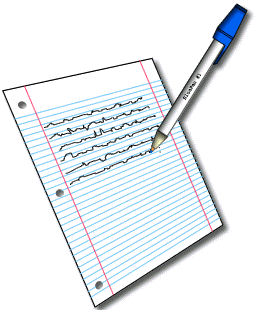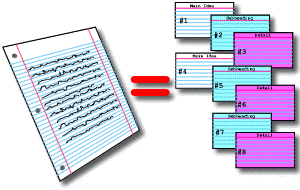P
lan.
- First start with a clear topic. Be
sure you know exactly what you want to write about.
- At this stage, you need to gather all
the information that you will need for your paper.
- Brainstorm and list all the ideas you
have about this topic.
- Make a list of topics that you need
to get more information on.
- Gather the information from different
sources, such as the internet and the library.
- Take notes on note cards of all information
that you want to include in your paper. Write down as much information
as possible so that you will not have to go back later and get
more information. Do not write complete sentences; just write
phrases representing the ideas.
- Be sure to write in complete references
for all the information that you gathered so that they can be
included in a bibliography later.
|
 |
O
rganize.
- Review notes of your ideas and your
notecards.
- Organize these in an outline using
the main ideas of your paper as the major headings.
- You can write each of these main ideas
on large or different colored notecards.
- Arrange each of the notecards from
the planning stage under each of the main idea cards.
- Arrange the notecards in order and
number them.
- Go back and make an outline of major
headings, subheadings, and details.
|
|
W
rite.
- Use your outlines and notecards as
a guide for writing your paper.
- Write complete sentences for the phrases
on the notecards.
- Do not pay attention to mistakes at
this stage. Just make sure that you include all the ideas and
that you state these clearly and in order.
|

|
E
dit.
- Check all spelling, capitalization,
punctuation, order of words, and grammar using the SCOPE
strategy.
- Check whether your ideas are well stated
using the FAST strategy.
- It may be helpful to read your paper
aloud as a way of checking for errors.
|
 |
R
evise.
- Based on your editing using SCOPE and
FAST, revise your paper.
- Re-read it one last time before turning
it in.
|
 |







